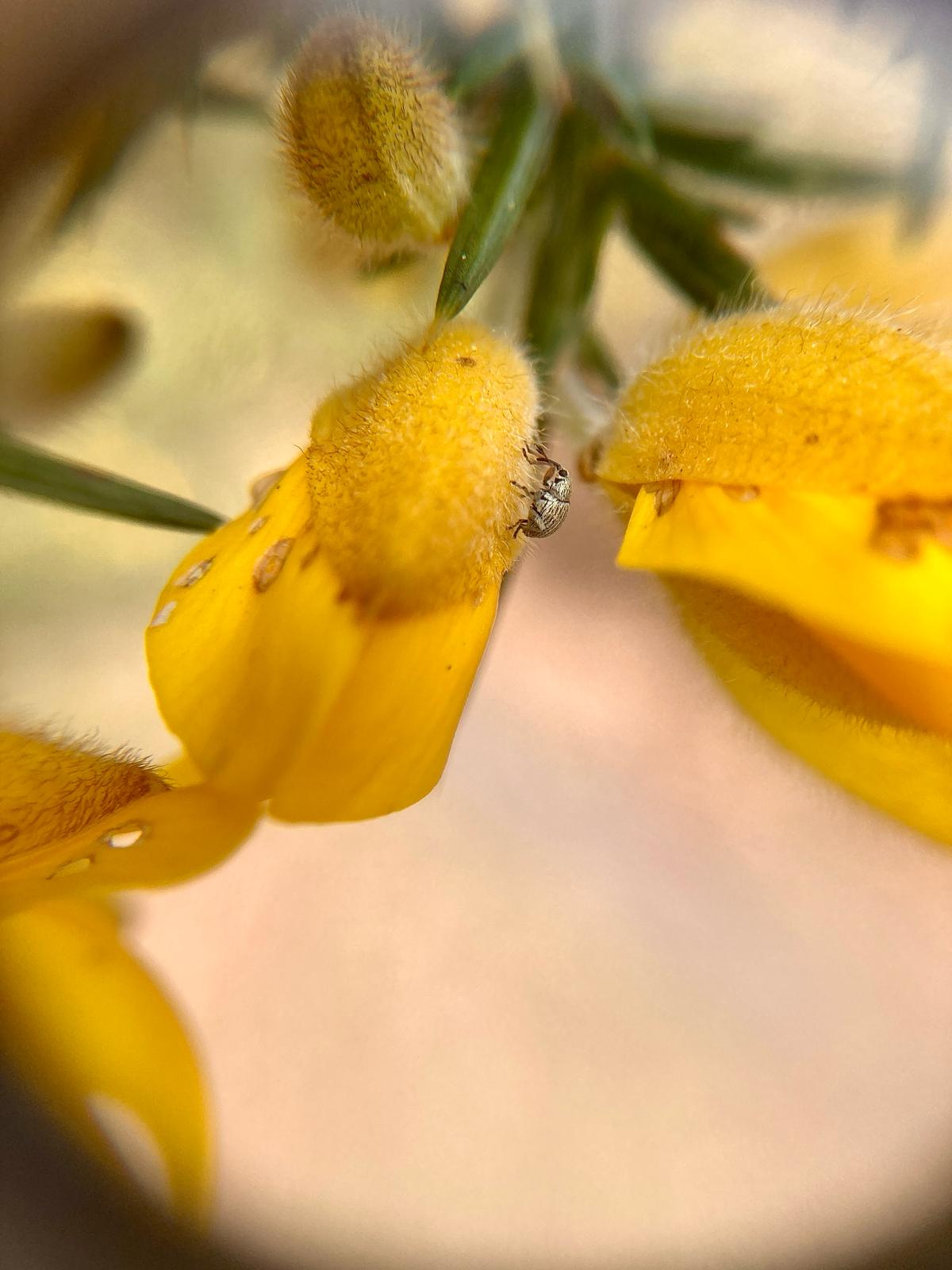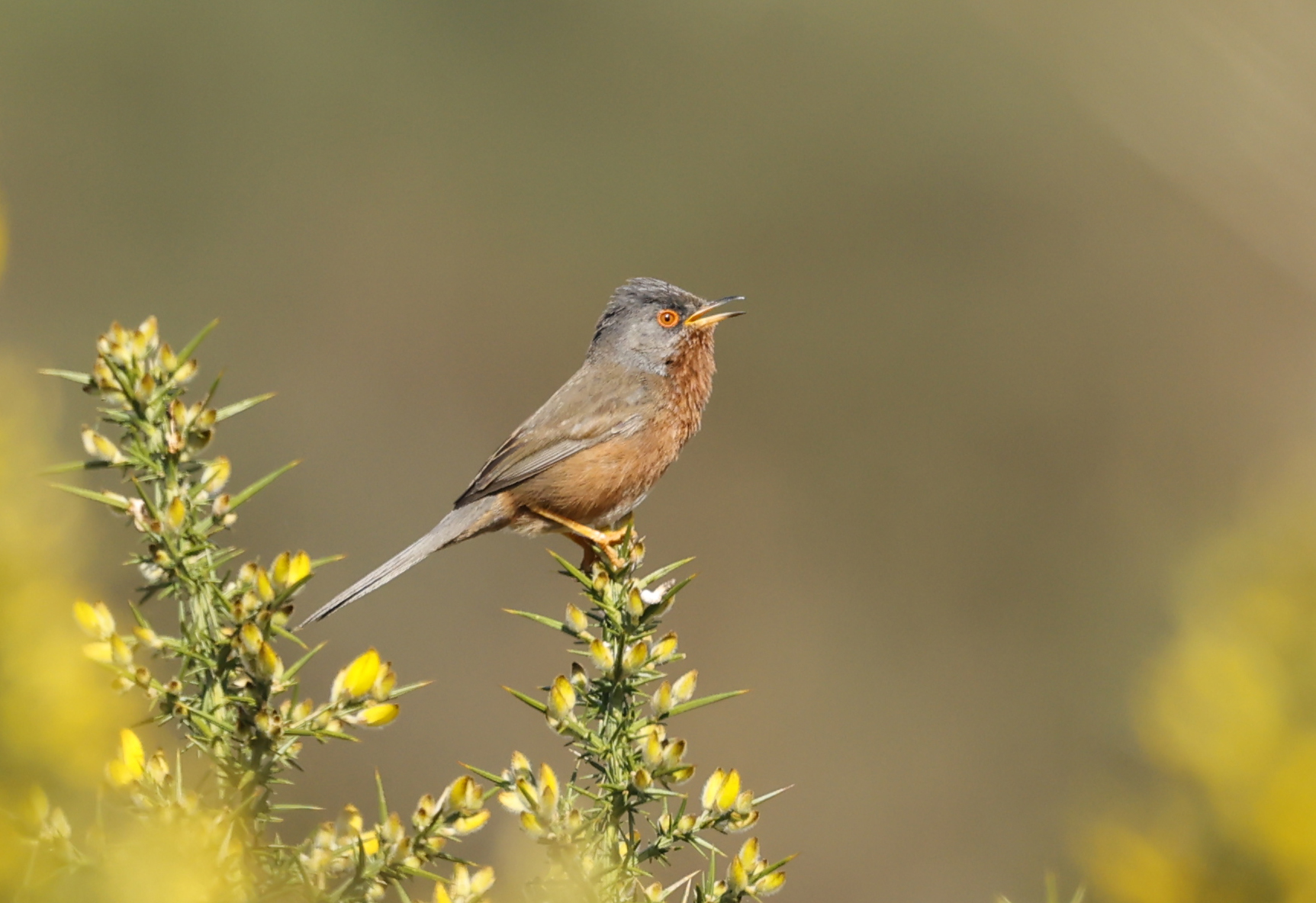Wondering Warden – gorgeous gorse!
As one of the new seasonal wardens I am lucky enough to call the Thames Basin Heaths my office. And this sunny March morning my office is looking particularly splendid with a sea of delicate yellow flowers erupting from the violently spiky gorse bushes that line each side of the path.
As I walk past this contradictory plant, trying not to get scratched, memories of my younger years flood into my head and I’ve been jettisoned back to the 1980’s and it’s summertime! The air is filled with a delicious coconut-y aroma which is emanating from these flowers, induced by the warmth. The smell reminds me of the suntan oils that we slathered ourselves in and poorly made Pina Colada cocktails that we drank whilst reading the latest edition of Smash Hits (no phones back then). It’s funny how a plant can have such an impact on your day! Reminiscing of yesteryear I decide to learn more about this evocative shrub.
 Paula enjoying the sweet coconut scent
Paula enjoying the sweet coconut scent
Gorse is a member of the pea family and flowers for a good chunk of the year (January – June) so I will have many more opportunities to travel back in time. The sweetly scented flowers may not contain much nectar, but they are pollen-rich. Bees collect the pollen and mix it with water to make ‘pollen bread’, an important source of protein that is fed to their growing larvae. The flowers get eaten by a host of insects including weevils, moths (such as casebearer moths) and many types of beetle. Surprisingly, even the vicious spikes of younger plants are enjoyed by browsing herbivores.
 Spot the weevil. Credit: Tim Britt Searle
Spot the weevil. Credit: Tim Britt Searle
Our little Darties (Dartford Warbler for the uninitiated) like to nest just a little off the ground in amongst the safety of the thorns and are often seen perched proudly at the top of the larger bushes. It’s as if they are declaring their marvellous habitat to potential mates. The thicker, denser bushes offer much needed shelter to this little bird when temperatures drop and as this insect eater overwinters on the heaths, prolonged bouts of snow and severe winter weather can have negative impacts on populations.
 Dartford Warbler. Credit: Mark Leitch
Dartford Warbler. Credit: Mark Leitch
Whilst the intrinsic value of gorse to wildlife is evident all year round, it is, or was, an important part of our lives also. Gorse was used in the home, mainly in bread ovens because of its ability to burn at high temperatures, heating up quickly, efficiently, and creating very little ash (which when mixed with clay was a soap substitute). Commoners were allowed to collect gorse as often as they needed but the stipulation was that you were only allowed to ‘take what you could carry on your backs’.
Despite its prickles the young plants are very nutritious, and it was cut and crushed for winter fodder to give to horses. This incidental ‘management’ of gorse helped to keep it under control. Now these practices are no longer used, land managers and their dedicated volunteers work hard to keep the balance. Gorse can take over a heathland, reducing its biodiversity. As it becomes leggy it’s no longer suitable for our Darties and shades out many low-growing plants. Blocks of old gorse also provide an abundant supply of fuel for wildfires, which can be devastating.
As I read further about this wonderful smelling shrub it seems that gorse was a popular choice in the making of pyres for burning heretics! Richard Cavendish wrote in ‘History Today’ that Nicolas Ridley was burned at the stake in 1555 for his teachings and support of Lady Jane Grey. His ‘pyre was made of gorse branches and faggots of wood’.
On a lighter note, folklore states that when ‘gorse is out of bloom you should not kiss your loved one’, but I’m happy to inform you there’s more than one species of gorse in the UK, so there’ll always be gorse flowering somewhere. Kiss away!
 Hazeley Heath. Credit: Nicola Buckland
Hazeley Heath. Credit: Nicola Buckland
I finish my walk through the gorse-banked paths, enjoying the sights and sounds of the beautiful heathland and drift slowly back to the present day before heading home to give my husband a little kiss.
Paula
Thames Basin Heaths Partnership
